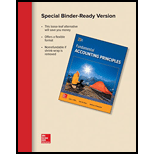
Concept explainers
Concept Introduction:
Variable overheads are the expenses which are incurred by the company other than Direct Material Cost and Direct Labour Cost. As the name denotes this cost is variable in nature, i.e.,it varies with the volume of production.
The difference between the Standard Variable Overhead and the Actual Variable overhead is the Variable Overheads Variance.
Like Labour Cost Variance, Variable Overhead variance may be caused because of either change in rate per hour or change in number of hours from the standard time.
Thus Variable Overhead Cost Variance is the sum of Variable Overhead expenditure variance and Variable Overhead Efficiency Variance.
The following are the formulas for the same:
Variable Overhead Cost Variance (VOCV) = Variable Overhead expenditure variance + Variable
Overhead Efficiency Variance
Also, Variable Overhead Cost Variance (VOCV) = Standard Variable Overhead Cost (SVOC) – Actual
Variable Overhead Cost(AVOC)
To Determine: Variable Overhead Cost Variance
Want to see the full answer?
Check out a sample textbook solution
Chapter 23 Solutions
Loose Leaf for Fundamental Accounting Principles
- How can I solve this financial accounting problem using the appropriate financial process?arrow_forwardI am searching for the accurate solution to this general accounting problem with the right approach.arrow_forwardPlease provide the correct answer to this general accounting problem using valid calculations.arrow_forward
- Billie Bob purchased a used camera (five-year property) for use in his sole proprietorship in the prior year. The basis of the camera was $2,400. Billie Bob used the camera in his business 60 percent of the time during the first year. During the second year, Billie Bob used the camera 40 percent for business use. Calculate Billie Bob’s depreciation deduction during the second year, assuming the sole proprietorship had a loss during the year. (Billie Bob did not place the asset in service in the last quarter.arrow_forwardAccording to the income tax of Jamaica, a person is a resident if he (a) lives in the country, (b) resides in the country for not more than 183 days, (c) lives in a country 183 days or longer in any one year, or (d) lives in a country for 3 consecutive months in any one year.arrow_forwardHiarrow_forward
- A local bakery sells 12,000 loaves of sourdough bread each year. The loaves are ordered from an outside supplier, and it takes 4 days for each shipment of loaves to arrive. Ordering costs are estimated at $18 per order. Carrying costs are $6 per loaf per year. Assume that the bakery is open 300 days a year. What is the maximum inventory of loaves held in a given ordering cycle? Solutionarrow_forwardHello tutorarrow_forwardA local bakery sells 12,000 loaves of sourdough bread each year. The loaves are ordered from an outside supplier, and it takes 4 days for each shipment of loaves to arrive. Ordering costs are estimated at $18 per order. Carrying costs are $6 per loaf per year. Assume that the bakery is open 300 days a year. What is the maximum inventory of loaves held in a given ordering cycle?arrow_forward

 AccountingAccountingISBN:9781337272094Author:WARREN, Carl S., Reeve, James M., Duchac, Jonathan E.Publisher:Cengage Learning,
AccountingAccountingISBN:9781337272094Author:WARREN, Carl S., Reeve, James M., Duchac, Jonathan E.Publisher:Cengage Learning, Accounting Information SystemsAccountingISBN:9781337619202Author:Hall, James A.Publisher:Cengage Learning,
Accounting Information SystemsAccountingISBN:9781337619202Author:Hall, James A.Publisher:Cengage Learning, Horngren's Cost Accounting: A Managerial Emphasis...AccountingISBN:9780134475585Author:Srikant M. Datar, Madhav V. RajanPublisher:PEARSON
Horngren's Cost Accounting: A Managerial Emphasis...AccountingISBN:9780134475585Author:Srikant M. Datar, Madhav V. RajanPublisher:PEARSON Intermediate AccountingAccountingISBN:9781259722660Author:J. David Spiceland, Mark W. Nelson, Wayne M ThomasPublisher:McGraw-Hill Education
Intermediate AccountingAccountingISBN:9781259722660Author:J. David Spiceland, Mark W. Nelson, Wayne M ThomasPublisher:McGraw-Hill Education Financial and Managerial AccountingAccountingISBN:9781259726705Author:John J Wild, Ken W. Shaw, Barbara Chiappetta Fundamental Accounting PrinciplesPublisher:McGraw-Hill Education
Financial and Managerial AccountingAccountingISBN:9781259726705Author:John J Wild, Ken W. Shaw, Barbara Chiappetta Fundamental Accounting PrinciplesPublisher:McGraw-Hill Education





